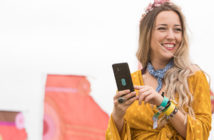By Lars Houbak, general manager of Mobilethink
Carriers and virtual carriers in most regions have experienced steady erosion in ARPU since 2010 according to analysts Strategy Analytics. Despite a collective $700 billion investment in infrastructure over the past ten years, revenue growth has been almost flat since 2007.
Subscriber acquisition and retention costs (SAC/SRC) take 27% of a Western European operator’s operational expenses (OPEX). Out of that, 69% goes to device subsidies and can take as much as 19% of a typical operator’s OPEX. Forward profitability is therefore threatened due to combined flat revenue and increasing subsidy costs.
Device subsidies being replaced
Today, when seeking OPEX savings and higher profitability, device subsidies are gradually being replaced with other kinds of customer acquisition tools such as device finance, cashback and extended contract lengths. But the biggest route to profitability growth for carriers is capturing the growing number of BYOD users. For carriers, success in winning this segment of the market is the number one initiative that could ultimately lead to the end for subsidised phones.
Current SAC business models would no longer be applicable by attracting BYOD users into a network, leading to lower SAC per user. If BYOD becomes mainstream, high street network shops would no longer need to have massive stocks of devices at the point of sale, thereby reducing logistics and warranty handling costs.
Today, the drive towards capturing more BYOD users in a carrier fleet is accelerating. In August 2015, Verizon Wireless introduced a new set of data plans that requires customers to pay for their smartphone in monthly instalments or buy it outright. This represents a radical change in how Verizon operates and signals a broader shift away from smartphone subsidies and service contracts.
Customers are increasingly paying for their devices in exchange for lower service fees, a trend started by T-Mobile two years ago. The change has resulted in heightened awareness of their smartphone and service costs.
Telefonica also decided to remove handset subsidies, but that came with a short term sacrifice. Its revenues from handsets in Spain, for example, halved between January and September 2012 to Euro 149 million while its mobile data revenues dropped by Euro 13 million over the same period to Euro 400 million. Yet, despite this short term hit, the operator’s OIBDA margin increased from 42.8% in the first quarter 2012 to 47.5% in the third quarter 2012 as its recurring mobile revenues increased by 4.8% between January and September 2012 to Euro 1.4 billion.
Operators losing control?
However, attracting BYOD users to a network is not without its problems. The more BYOD users, the less control the operator has over the device fleet. This poses three main challenges to carriers: deteriorated device detection and configuration accuracy; longer customer care handling time for calls that relate to device specific questions, which generally form 50% of all customer care calls; reduced ability for targeted real time customer engagement which reduces the effectiveness of promotion and loyalty campaigns.
Simply put, a carrier looking to drive profitability through BYOD has to solve the challenges of losing control over the device fleet or the benefits will be offset by slow customer on-boarding, reduced customer satisfaction and increased customer care costs.
With diminishing control over the device fleet, the importance of accurate and up to date device intelligence becomes the single most important requirement for device management, customer engagement and device support solutions.
Device detection accuracy
The higher the device detection accuracy in whatever device management solution, the more efficient and smooth on-boarding of highly profitable BYOD customers becomes.
The benefits of accurate device intelligence extend also to customer care. With BYOD, any operators’ device support solution must offer customers and customer care agents intuitive how-to-use guides for many more devices compared to a non-BYOD scenario.
In BYOD, device intelligence accuracy has the most direct revenue impact in an operators’ real time customer engagement process. It is of the utmost importance to accurately detect device models and combine that with precise device capability specifications and subscriber profile to increase the relevancy of promotional engagement messages.
In a nutshell, due to the growing share of BYOD subscriptions in a network, having accurate and up to date device intelligence data and settings are becoming more important than ever before.
BYOD users bring a breath of fresh air to wireless operators in all regions and every effort must be made to encourage growth in this segment of the market. If the era of subsidised phones can be brought to an end, the benefits for carriers and virtual carriers will be substantial and will significantly lower OPEX costs.
Mobilethink is part of the device intelligence business of Spirent Communications, provider of test and measurement.





